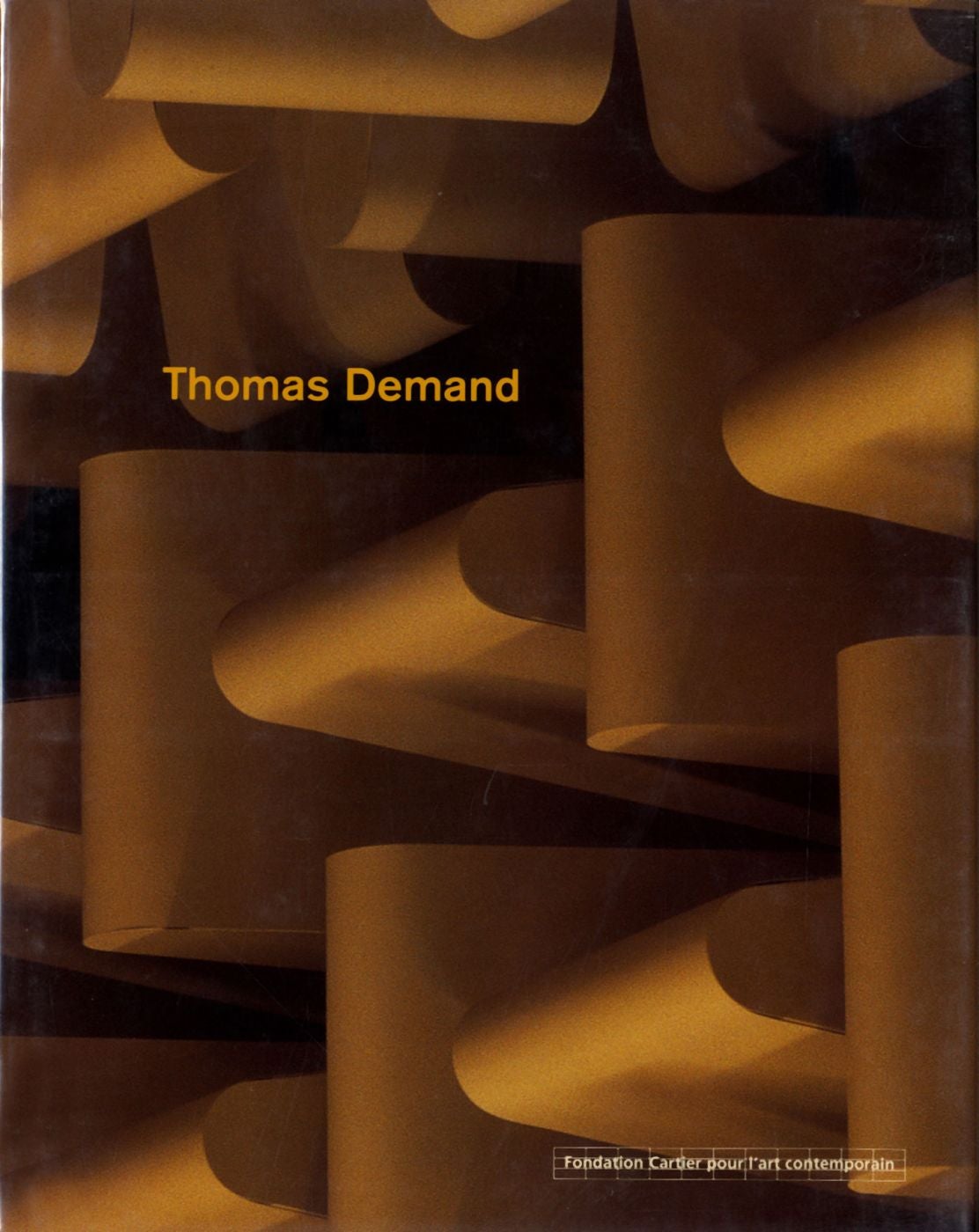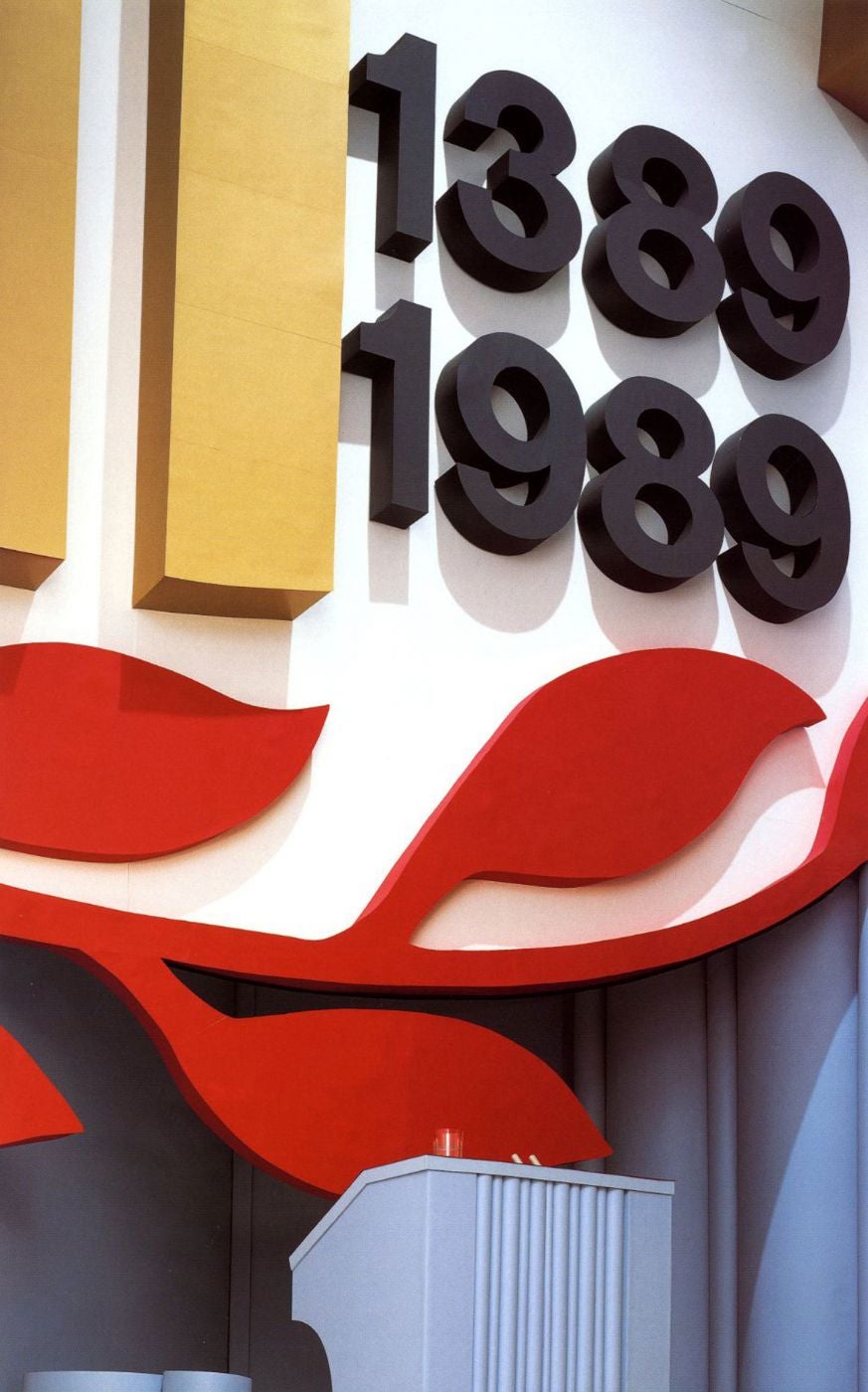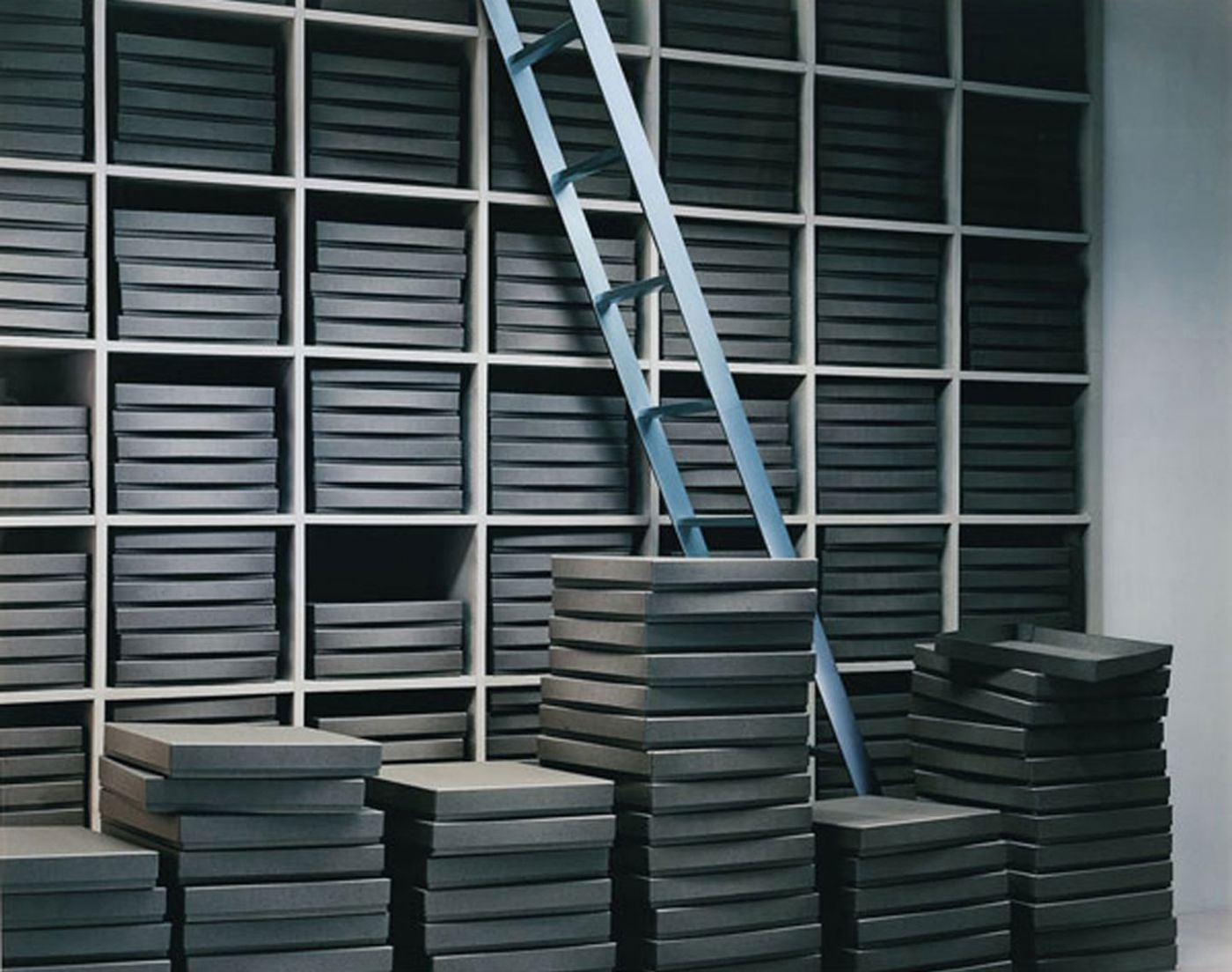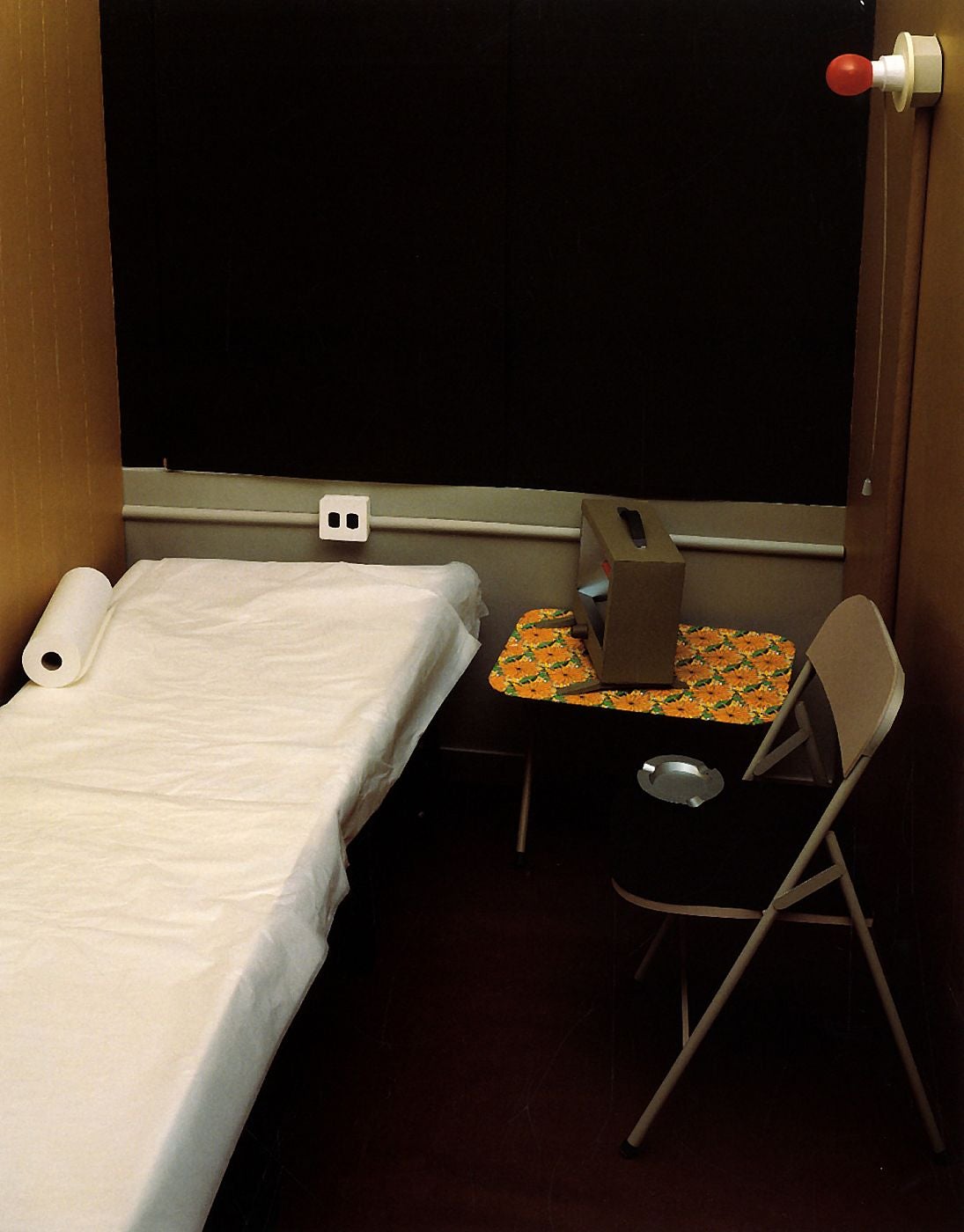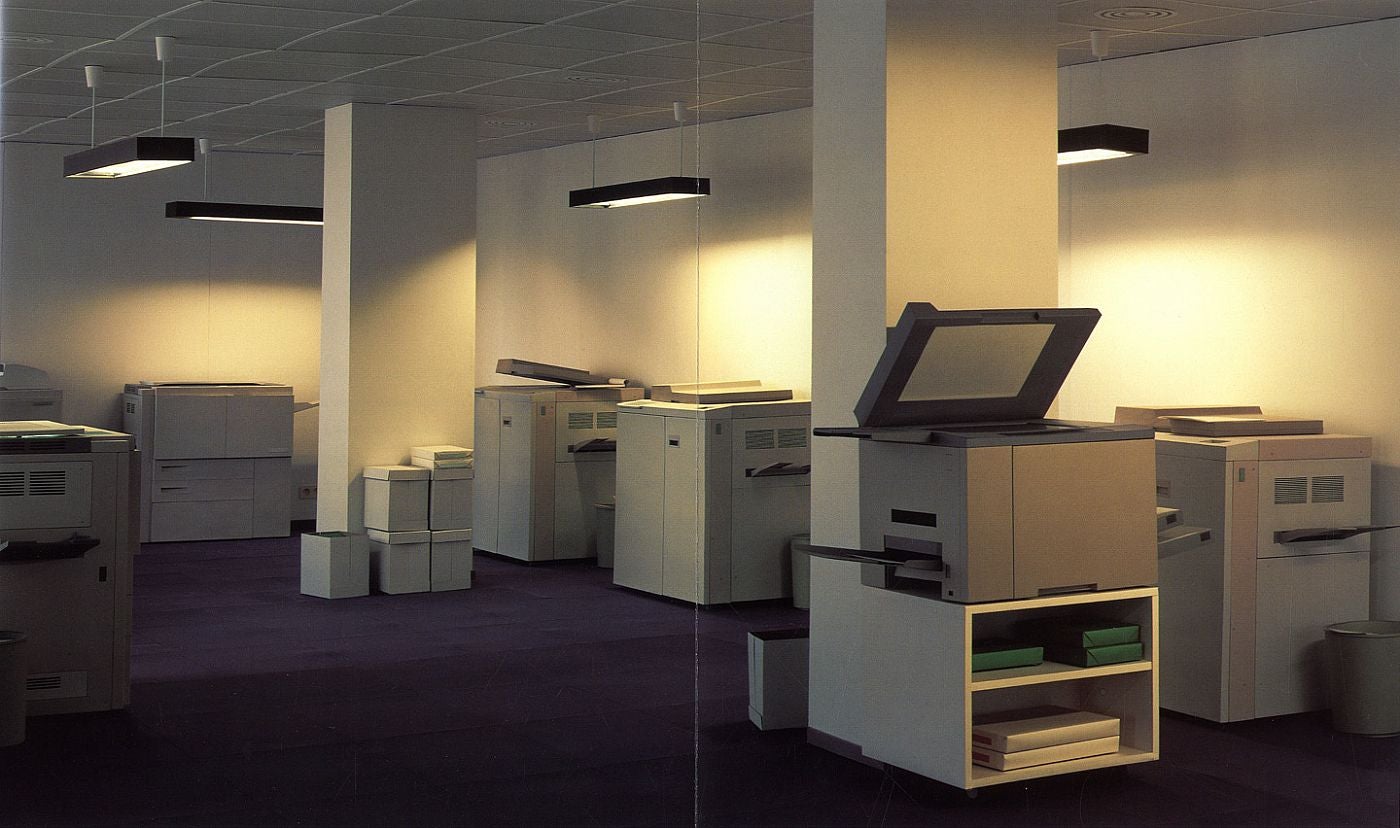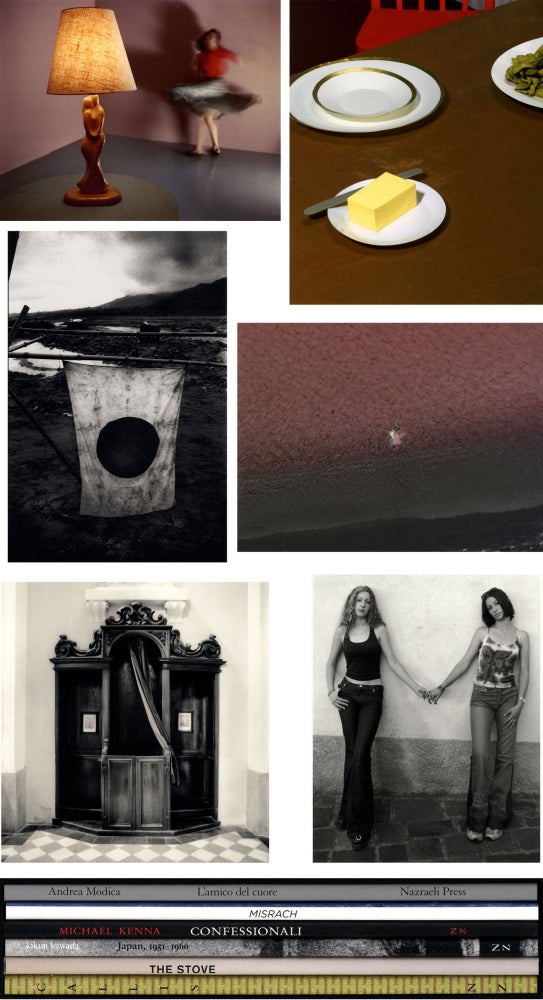Thomas Demand (Actes Sud and Fondation Cartier pour l'art contemporain, French Edition)
Publisher: Paris and Arles: Actes Sud and Fondation Cartier pour l'art contemporain, 2000
Edition: 1st Edition
Binding: Hardcover
ISBN: 2742730354
Condition: New / New
Item #: 100162
$24.00 save 50% $12.00
Specifics
First edition (French). Hardcover. Paper-covered boards, with photographically illustrated dust jacket. Includes texts (in French) by Francesco Bonami, Régis Durand and François Quintin, and an exhibition history and bibliography. 112 pp. with 29 four-color plates (with four 2-page gatefolds). 11-1/4 x 9 inches.
Published on the occasion of the 2000 exhibition Thomas Demand at the Fondation Cartier pour l'art contemporain, Paris.
Condition
New in publisher's shrink-wrap.
Description
Thomas Demand is one of the most important and relevant contemporary artists working today. Demand's starting point is usually an image culled from the mass media, off the Internet, or a low-resolution image discovered in a newspaper or other source during his research. Oftentimes, the picture has become iconic or representative in some way of an important historical, political or cultural event. He then painstakingly creates by hand, over the course of weeks or even months, a full-size (1:1) sculptural model from colored paper and cardboard. The paper model, in which he deliberately excludes certain specific details, and emphasizes various elements and graphic forms important to the original source image, is then photographed by Demand. This photograph is the final work of art and the paper-model is then destroyed and recycled ("Grotte / Grotto, 2006" is the only existing original paper sculpture).
Demand's large-scale photographs deal with our relationship to media in general, and photography in particular. The confluence of memory, individual interpretations and readings, collective meanings associated with significant events, are all examined. His process -- from source material and research, to the meticulous sculptural interpretation, to the final photographic work -- adds to his multi-layered examination of visual representation, as well as the problematic "indexical" nature of photography.
If one strips away specificity, if the details that allow us to "read" a photograph are reduced to generic bits of unremarkable paper, is the result a denial of what photography intends? If the photograph exists to let us know who we are in space, allows us to decode the details, the light, the "specifics," then Demand turns our perceptions into chaos. In his work, Demand uses sites of historical significance -- visual sites -- and recreates them in painstaking full-size scale models using cardboard and paper. The authenticity of the historical event is suggested, through titles, yet the images are stark and lifeless as enormous vacuums of energy and perception. They are intentionally blank and soul-less, so as to capture the inadequacy of photography's ability to really "capture" historical events.
From the publisher: "Behind Thomas Demand's impressive images, fragments of a hyper-realistic and familiar world, appears the singular echo of an 'other reality ,' from the archives, historic, political photos or more generally from media."


